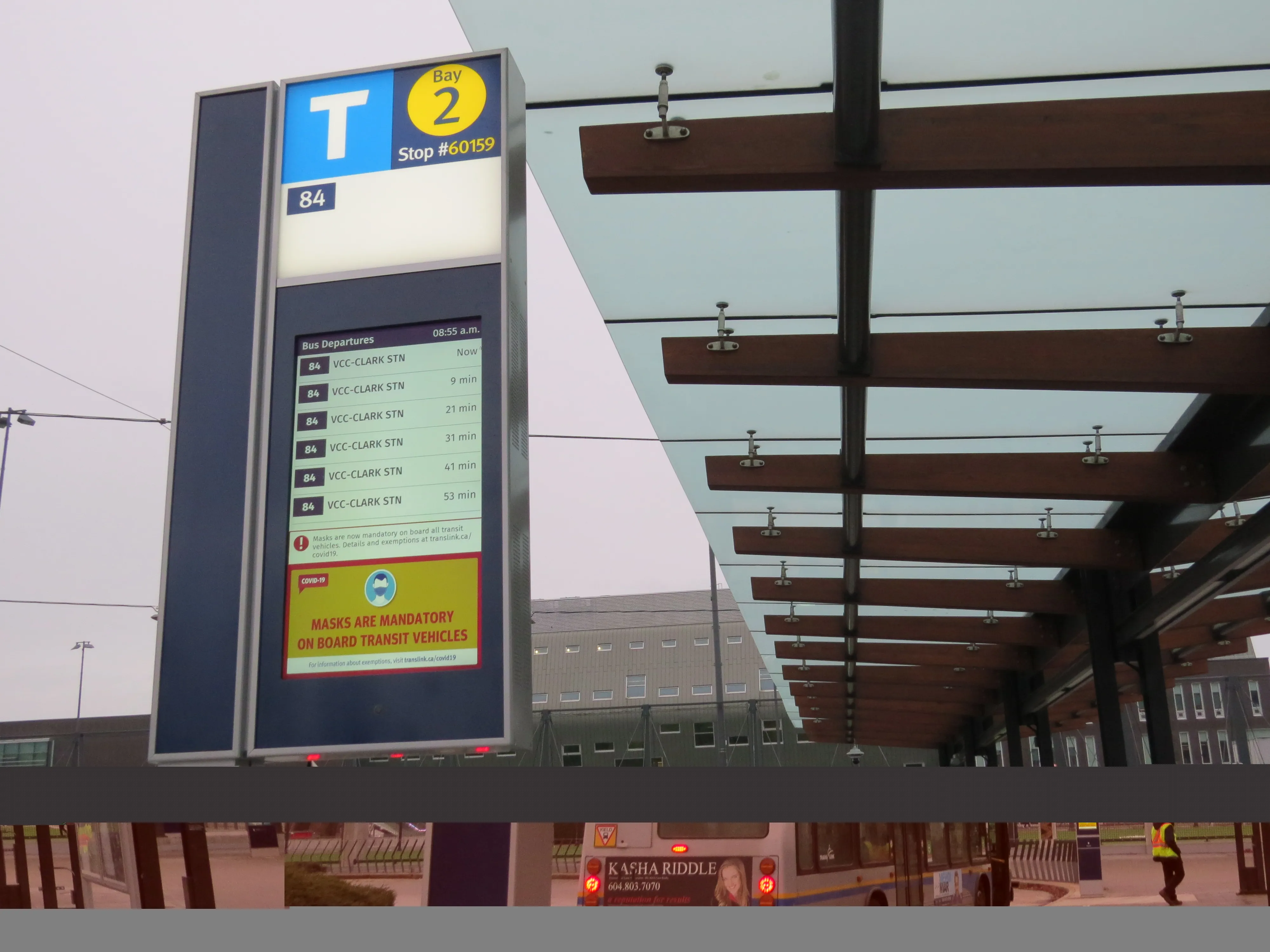
Canada's TransLink has installed new screens throughout its UBC Exchange at the University of British Columbia to improve real-time transit information for customers.
TransLink says the UBC Exchange is the first bus exchange on its system to receive similar technology that tells customers when their next bus is arriving following a renovation to live communication technology at SkyTrain stations.
TransLink CEO Kevin Quinn says: “Serving more than 17,000 people on an average weekday this year, UBC Exchange is one of the busiest bus exchanges on our system and this technology will enhance the commute of so many students, faculty members, and visitors.”
The screens provide full-colour LCD backlighting with larger text than regular bus stop signs, text to speech audio for the visually impaired and enhanced and backlit bus stop and route numbers.
Saad Shoaib, AMS vice president external affairs, says: “These new information screens, with text to speech technology for the visually impaired, will allow thousands of students to track, in real-time, when their bus will be arriving and departing. It is essential that we continue to enhance the UBC commuter experience by providing those who commute to and from our campus with accessible and reliable transit solutions.”
The new screens are integrated into bus stop poles throughout the exchange while a centrally located digital information board displays live system-wide transit information.
Over the next year, TransLink will gather feedback and evaluate the technology before possibly installing these screens at other bus exchanges in the future.
Other recent customer communication upgrades on TransLink's system include the installation of new real-time information displays on Expo/Millennium Line platforms and station entrances and the delivery of real-time bus information on all RapidBus stops.










